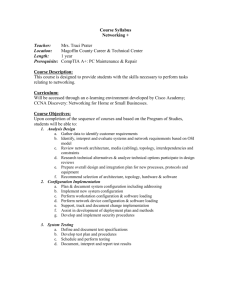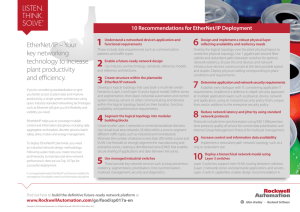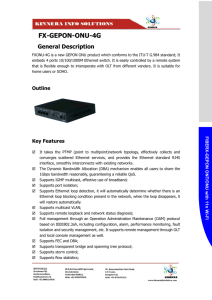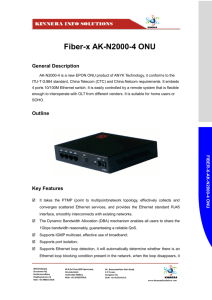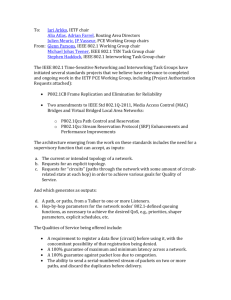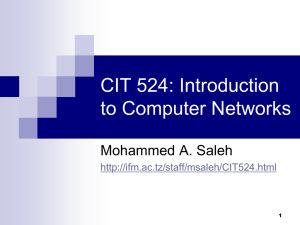Kuliah Komunikasi Data
advertisement
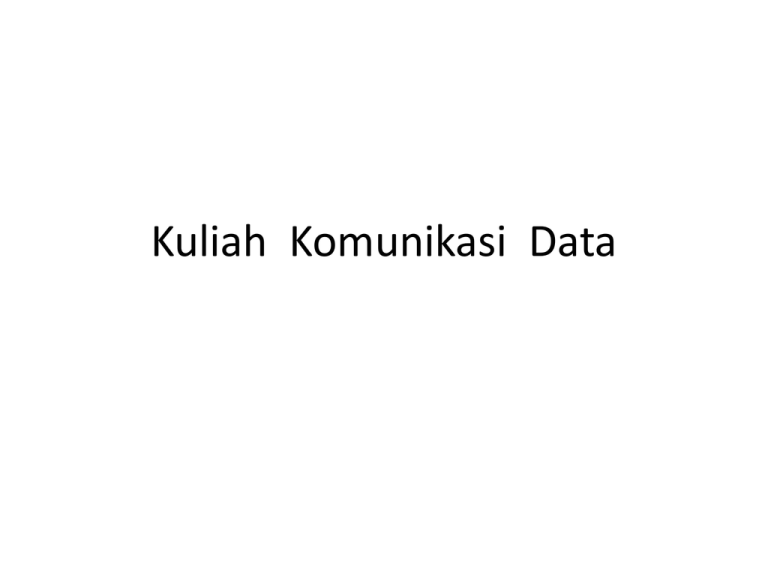
Kuliah Komunikasi Data Lima Komponen Komunikasi Data • • • • • Message: Information(data) to be communicated Sender Receiver Transmission medium: Physical path by which a message travels Protocol: A set of rules that govern data communication Arah Aliran Data 1-3 Topology 1-4 Standards Committees • ISO – Voluntary international organization • ITU-T – Formerly, CCITT formed by UN • ANSI – Private non-profit corporation in the US • IEEE – The largest engineering society in the world • EIA – Non-profit organization in the US 1-5 Network Models 1. 2. 3. 4. 5. Layered Tasks The OSI Model Layers in the OSI Model TCP/IP Protocol Suite Addressing 2-6 Pertukaran Data Model OSI • Encapsulation with header and possibly trailer TCP/IP Protocol Suite • Host-to-network : Physical and data link layer – No specific protocol • Network layer – IP(Internet Protocl), ARP(Address Resolution Protocol), RARP(Reverse ARP), ICMP(Internet Control Message Protocol), IGMO(Internet Group Message Protocol) • Transport layer – TCP(Transmission Control Protocol), UDP(User Datagram Protocl), SCTP(Stream Control Transmission Protocol), • Application Layer – Combined session, presentation, and application layers 2-8 Hubungan Antara Layers Dan Pengalamatan Transmisi Digital 1. Digital-to-Digital Conversion 2. Analog-to-Digital Conversion 3. Transmission Mode Skema Dari Line Coding Frequency Division Multiplexing • • • • • FDM is an analog multiplexing technique that combines analog signals Signals modulate different carrier frequencies Modulated signals are combined into a composite signal Channel - Bandwidth range to accommodate a modulated signal Channels can be separated by strips of unused bandwidth (guard band) to prevent overlapping Media Transmisi 1. Guided Media 2. Unguided Media: Wireless Jenis/kelas Dari Media Transmisi Wired LANs: Ethernet 1. 2. 3. 4. 5. IEEE Standards Standard Ethernet Changes in the Standard Fast Ethernet Gigabit Ethernet IEEE Standards • In 1985, the Computer Society of the IEEE started a project, called Project 802, to set standards to enable intercommunication among equipment from a variety of manufacturers. Project 802 is a way of specifying functions of the physical layer and the data link layer of major LAN protocols. Wireless LANs 1. IEEE 802.11 2. Bluetooth Introduction to Computer Networks Network Topology The network topology defines the way in which computers, printers, and other devices are connected. A network topology describes the layout of the wire and devices as well as the paths used by data transmissions. The IP Addressing Scheme • Addressing is specified by the Internet Protocol ( IP ) • Internet protocol address or IP address – A unique 32-bit binary number – Used for all communication with the host • Each 32-bit IP address is divided onto two parts – A prefix and a suffix • Network number – A unique value assigned to each physical network • The IP address hierarchy guarantees that – Each computer is assigned a unique address – Suffixes can be assigned locally without global coordination Classes of IP Addresses • The class of an address determines the boundary between the network prefix and host prefix • IP divides host address into their primary classes A, B and C • The first four bits of an address determines the class • To use IP multicasting, a set of hosts must agree to share a multicast address Basics of Network Addressing Every machine on the Internet has a unique identifying number, called an IP Address. A typical IP address looks like this: 216.27.61.137 But computers communicate in binary form. IP Addressing The same IP address in binary: 11011000.00011011.00111101.10001001 216.27.61.137


